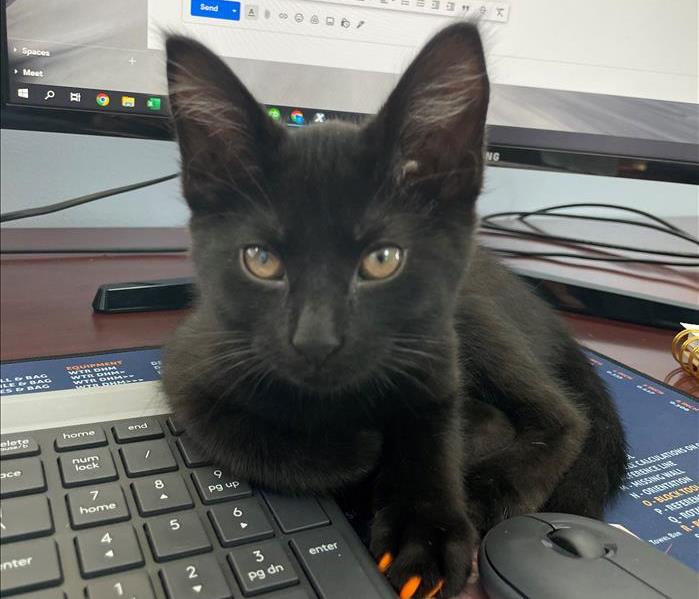Water CATs..?
6/10/2022 (Permalink)
When you think of water, cats probably aren't the first thing that come to mind, but when you have a water loss in your home or business it is best to act fast. Not only does this assure that you will get back normal as soon as possible but delaying the mitigation process can affect the category of water in your facility. The category of water is a major factor in mitigation. Here is a brief description of each category of water and how it effects the mitigation process.
Category 1
- This category of water has come from a clean source with little threat of causing sickness or discomfort.
- The water can remain a CAT 1 if it has not been present for an excessive amount of time and the affected materials are clean and well maintained.
- Some examples of CAT 1 water sources could be water supply line, sink overflows with no contaminants or an appliance water supply line malfunction.
- CAT 1 water loss usually need minimal demolition and can be dried.
Category 2
- This category of water has potential to cause sickness or discomfort and should not stay in a structure for an extended period.
- Potential sources of CAT 2 water loss include waterbed leaks, aquariums, washing machine and dishwasher discharge, and toilet bowl overflows (urine only)
- At a minimum affected carpet pad must be removed and carpet must be cleaned with hot water extraction before it can be reinstalled.
- Another good practice with a CAT 2 water loss is to spray an anti-microbial to all affected areas to prevent any further damage.
Category 3
- This category of water come from a grossly unsanitary source and contains pathogenic agents.
- Some sources of CAT 3 water include groundwater (flood water) and discharge from toilet that came from beyond the toilet trap (sewer or septic system).
- Many procedures are necessary when dealing with CAT 3 water including several forms of PPE (personal protective equipment) such as rubber boots, respiratory protection, body coverings, rubber gloves and eye protections. Anyone with a compromised immune system must leave the facility. Occupant and worker safety top priority when working with hazardous materials.
- Demolition must be performed on highly porous materials including but not limited to carpet, carpet pad, drywall, and insulation.
- Restorers should apply biocide during and after demolition to help control microorganisms and increase cleaning effectiveness.
The category of water is deteriorating the longer the water sits, so If you experience a water loss in your home or business please don’t hesitate to call SERVPRO of Central Auglaize/Hardin/Logan Counties at 937-354-3540.



 24/7 Emergency Service
24/7 Emergency Service
